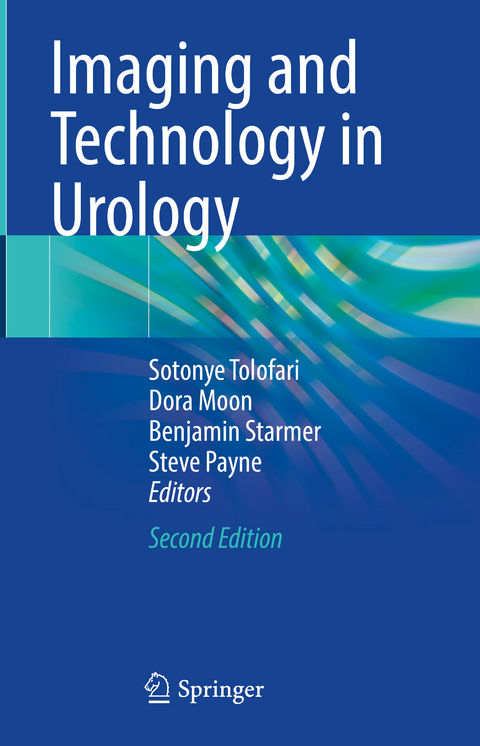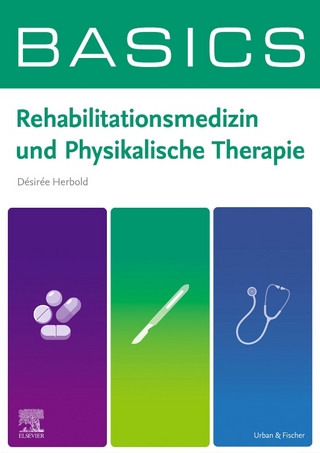
Imaging and Technology in Urology
Springer International Publishing (Verlag)
978-3-031-26057-5 (ISBN)
This book offers a new edition of the hugely successful title, Imaging & Technology in Urology--Principles and Clinical Applications edited by Steve Payne, Ian Eardley, Kieran O'Flynn in 2012. Essential reading for preparation of exit exams in Urology, it is used worldwide by exam candidates. Fully updated in essential areas of the book following on from recent developments in the last decade, it helps give preparation to candidates.
The most comprehensive and reliable source of information on this particular topic.lt;b>Sotonye Tolofari BSc(Hons) MBChB FRCS(Urol) Salford Care Organisation, Northern Care alliance NHS Trust, Manchester, UK Mr Tolofari studied Medicine at the University of Manchester, graduating in 2011. During his undergraduate career, he was awarded an intercalated 1st Class(Hons) Pathology BSc. Over the subsequent decade he trained in General & Urological Surgery in the North West of England. He successfully completed the FRCS(Urol) examination and was awarded the Keith Yeates Gold Medal for outstanding performance in 2019. Sotonye's specialist interests include the treatment of kidney cancer and upper tract urothelial cancer using open, laparoscopic and robotic techniques. He also has interests in prostate cancer diagnostics and the treatment of benign prostate hyperplasia (BPH).Sotonye Tolofari was the Chairman of the British Association of Urological Surgeons (BAUS) Section of Trainees in 2020 and, as such, sat on the Speciality Advisory Committee (SAC) for Urology. He is the current Clinical Director for Urological Cancers in the Greater Manchester Cancer Alliance. He has an active involvement in research and quality improvement with multiple authored peer reviewed publications and learning modules.
Mrs Dora Moon, MBChB FRCS(Urol), Consultant Urologist
Dora Moon studied Medicine at the University of Manchester, UK graduating in 2008. She developed a interest in basic science research, further developing this whilst working as a research associate at The University of Vermont College of Medicine in the USA.
Her post-graduate surgical training was based in the North West of England, during which she sat as treasurer and committee member on the national urology trainee committee BSoT for 3 years. Dora works as an NHS consultant in Lancashire, offering a tertiary robotic surgery service for the treatment of renal cell and upper urothelial tract cancer, for patients in Lancashire and South Cumbria.
Part 1: Imaging Radiology.- Ch 1: Principles of X-ray production and radiation protection.- Ch 2: How to perform a clinical radiograph and use a C-arm.- Ch 3: Contrast agents.- Ch 4: Dual Energy X ray absorptiometry (DXA).- Ch 5: The physics of ultrasound and Doppler.- Ch 6: How to ultrasound a suspected renal mass.- Ch 7: How to ultrasound a painful testicle and mass.- Ch 8: How to do a trans-perineal ultrasound guided biopsy of the prostate.- Ch 9: How to manage an infected obstructed kidney.- Ch 10: Principles of computed tomography (CT).- Ch 11: How to do a CT urogram (CTU).- Ch 12: How to do a renal and adrenal CT.- Ch 13: How to do a CT in a patient with presumed upper tract trauma.- Ch 14: Principles of magnetic resonance imaging (MRI).- Ch 15: Safety in MR scanning.- Ch 16: Urological applications of MR scanning.- Ch 17: Vascular embolization techniques in urology.- Part 2: Imaging Nuclear Medicine.- Ch 18: Radionuclides and their uses in urology.- Ch 19: Counting and imaging in nuclear medicine.- Ch 20: Principles of Positron Emission Tomography (PET) scanning.- Ch 21: PET-CT imaging in prostate cancer.- Ch 22: Understanding the renogram - how it's done and how to interpret it.- Ch 23: The diuresis renogram - how it's done and how to interpret it.- Ch 24: Understanding the DMSA scan - how it's done and how to interpret it.- Ch 25: How to do a radioisotope glomerular filtration rate study.- Ch 26: Understanding the radionuclide bone scan - how it's done and how to interpret it.- Ch 27: Renography of the transplanted kidney - how it's done and how to interpret it.- Ch 28: Dynamic sentinel lymph node biopsy in penile cancer.- Part 3: Technology Diagnostic technology.- Ch 29: Urinalysis.- Ch 30: Principles of urine microscopy and micro-biological culture.- Ch 31: Urinary flow cytometry.- Ch 32: Urine cytology.- Ch 33: Histopathologial processing, staining and immuno-histochemistry.- Ch 34: Tumour markers.- Ch 35: Measurement of glomerular filtration rate (GFR).- Ch 36: Assessment of urinary tract stones.- Ch 37: Principles of pressure measurement.- Ch 38: Principles of measurement of urinary flow.- Ch 39: How to carry out a videocystometrogram (VCMG) in an adult.- Ch 40: Sphincter electromyography (EMG).- Part 4 Technology Operative.- Ch 41: Operating theatre safety.- Ch 42: Principles of decontamination.- Ch 43: Patient safety in the operating theatre environment.- Ch 44: Venous thromboembolic prevention.- Ch 45: Anticoagulants and their reversal.- Ch 46: Haemostatic agents, tissue sealants and adhesives.- Ch 47: Transfusion in urology.- Ch 48: Cell salvage in urological surgery.- Ch 49: Principles of urological endoscopes.- Ch 50: Rigid endoscope design.- Ch 51: Light Sources, light leads and camera systems.- Ch 52: Peripherals for endoscopic use.- Ch 53: Peripherals for laparoscopic use.- Ch 54: Peripherals for mechanical stone manipulation.- Ch 55: Sutures, staples and clips.- Ch 56: Contact lithotripters.- Ch 57: Monopolar diathermy.- Ch 58: Bipolar diathermy.- Ch 59: Alternatives to electro-surgery.- Ch 60: Operative tissue destruction.- Ch 61: Endoscopic use of laser energy.- Ch 62: Double J stents and nephrostomy.- Ch 63: Urinary catheters, design and usage.- Ch 64: Urological prosthetics.- Ch 65: Mesh in urological surgery.- Ch 66: Irrigant fluids and their hazards.- Ch 67: Insufflants and their hazards.- Ch 68: Laparoscopic ports.- Ch 69: Principles of robotic surgery.- Ch 70: Setting up robotic surgery.- Ch 71: Principles of tissue transfer for urologists. Part 5: Technology Interventional.- Ch 72: Neuromodulation by scaral nerve stimulation.- Ch 73: Principles of extracorporeal lithotripsy (ESWL).- Ch 74: How to carry out shockwave lithotripsy.- Ch 75: New technologies for BPH.- Ch 76: Ablative therapies.- Ch 77: Principles of radiotherapy.- Ch 78: Alternative radiotherapy techniques.- Ch 79: Augmented intravesical drug administration.- Part 6: Technology of renal failure.- Ch 80: Principles of renal replacement therapy (RRT).- Ch 81: Principles of peritoneal dialysis.- Ch 82: Haemodialysis.- Ch 83: Principles of renal transplantation.- Part 7: Assessment of technology.- Ch 84: Key concepts in the design of randomised controlled trials.- Ch 85: Reporting and Interpreting data from RCTs.- Ch 86: Health technology assessment (HTA).- Backmatter: Appendices.
"The second edition of Imaging and Technology in Urology is a comprehensive 475-page book covering all aspects of urological technology, with contributions from UK-based urology and radiology colleagues. ... The individual chapters are concise, easy to read and well illustrated ... . the text acts as a handy reference manual to dip in and out of, to refresh knowledge on specific techniques, without needing to read the entire book from cover to cover." (Emma Mironska, RAD Magazine, March, 2024)
| Erscheinungsdatum | 15.07.2023 |
|---|---|
| Zusatzinfo | XV, 502 p. 212 illus., 152 illus. in color. |
| Verlagsort | Cham |
| Sprache | englisch |
| Maße | 155 x 235 mm |
| Gewicht | 987 g |
| Themenwelt | Medizin / Pharmazie ► Medizinische Fachgebiete ► Radiologie / Bildgebende Verfahren |
| Medizin / Pharmazie ► Medizinische Fachgebiete ► Urologie | |
| Schlagworte | Computed tomography • kidney • Kidney diseases • Magnetic Resonance Imaging • Medical Imaging • Prostate • Prostatitis • radiography • Rectum • Renal Cancer • ultrasonography • Urology • X-ray tomography |
| ISBN-10 | 3-031-26057-0 / 3031260570 |
| ISBN-13 | 978-3-031-26057-5 / 9783031260575 |
| Zustand | Neuware |
| Informationen gemäß Produktsicherheitsverordnung (GPSR) | |
| Haben Sie eine Frage zum Produkt? |
aus dem Bereich


